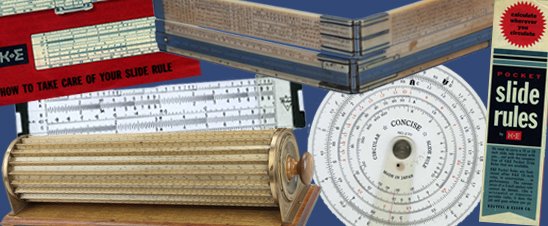In 1881, Edwin Thacher, a "computing engineer" for the Keystone Bridge Company in Pittsburgh, Pennsylvania, received a patent for an improvement in slide rules. Thacher was a graduate of Rennselaer Polytechnic Institute who spent much of his career designing railway bridges.
- Description
-
In 1881, Edwin Thacher, a "computing engineer" for the Keystone Bridge Company in Pittsburgh, Pennsylvania, received a patent for an improvement in slide rules. Thacher was a graduate of Rennselaer Polytechnic Institute who spent much of his career designing railway bridges. To assist in his calculations, he designed a cylindrical slide rule. Thacher's rule, though it fit on a desk, was equivalent to a conventional slide rule over 59 feet long. It had scales for multiplication and division and another scale, with divisions twice as large, for use in finding squares and square roots. But it had no trigonometric scales.
-
To produce his "calculating instrument," Thacher turned to the London firm of W. F. Stanley. The company even designed a special dividing engine for preparing the scales for the instrument. These were printed on paper sheets, which were pasted to the drum and the slats. In this example, the paper is also printed in italics on the right side: Patented by Edwin Thatcher [sic], C.E. Nov. 1st 1881. Divided by W. F. Stanley, London, 1882.
-
The drum is rotated with wooden handles. The cylinder of slats is held in place with a brass frame, which is affixed to a wooden base. A paper of DIRECTIONS AND RULES FOR OPERATING is lacquered to the front of the base. The rear of the base bears a small silver metal label engraved: Keuffel & Esser (/) New York. F. F. NICKEL is painted underneath the base.
-
Keuffel & Esser Company of New York sold versions of the Thacher cylindrical slide rule from at least 1883 until about 1950. There were two models, one with a magnifying glass (K&E model 1741, later K&E model 4013), and one without (K&E model 1740, later K&E 4012). This is a model 1740. The front right corner of the instrument's metal frame is engraved with the number 107. A paper K&E label on the inside lid of the instrument's mahogany case is marked in ink: 1740/661 (/) Thachers (/) Calculating (/)Instr. The top front of the bottom of the case is also carved with 661. In 1887, the model 1740 sold for $30.00.
-
Frank Ferdinand Nickel purchased this example around 1883 and donated it to the Smithsonian in 1945, through his son, Henry W. Nickel. The elder Nickel was born in Hanau, Germany, in 1857. He came to the United States around 1883 and worked as a mechanical engineer in New York, Ohio, Pennsylvania, and New Jersey. He also taught at Columbia University in the 1910s. He wrote Direct-Acting Steam Pumps (New York: McGraw-Hill, 1915).
-
See also 1987.0107.08 and 1987.0808.01.
-
References: Edwin Thacher, "Slide-Rule" (U.S. Patent 249,117 issued November 1, 1881); "Thacher's Calculating Instrument or Cylindrical Slide Rule," Engineering News 16 (18 December 1886): 410; Wayne E. Feely, "Thacher Cylindrical Slide Rules," The Chronicle of the Early American Industries Association 50 (1997): 125–127; Wilfred Scott Downs, ed., "Nickel, Frank F.," Who's Who in Engineering, vol. 3 (New York, 1931), 957; Catalogue of Keuffel & Esser (New York, 1887), 128. This was the first K&E catalog to list the model 1740.
- Location
-
Currently not on view
- date made
-
ca 1883
- maker
-
Stanley, William Ford
-
Keuffel & Esser Co.
- ID Number
-
MA.312866
- accession number
-
169701
- catalog number
-
312866
